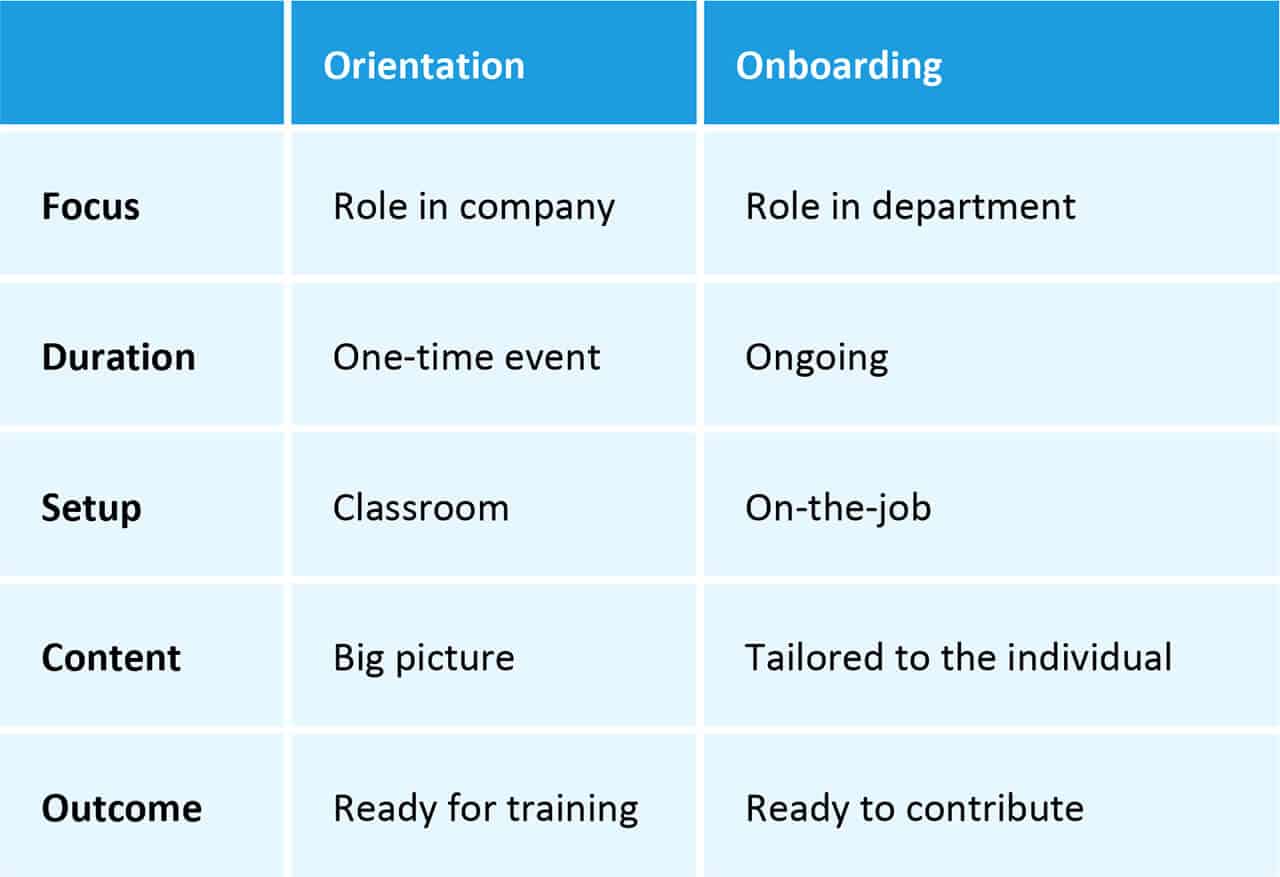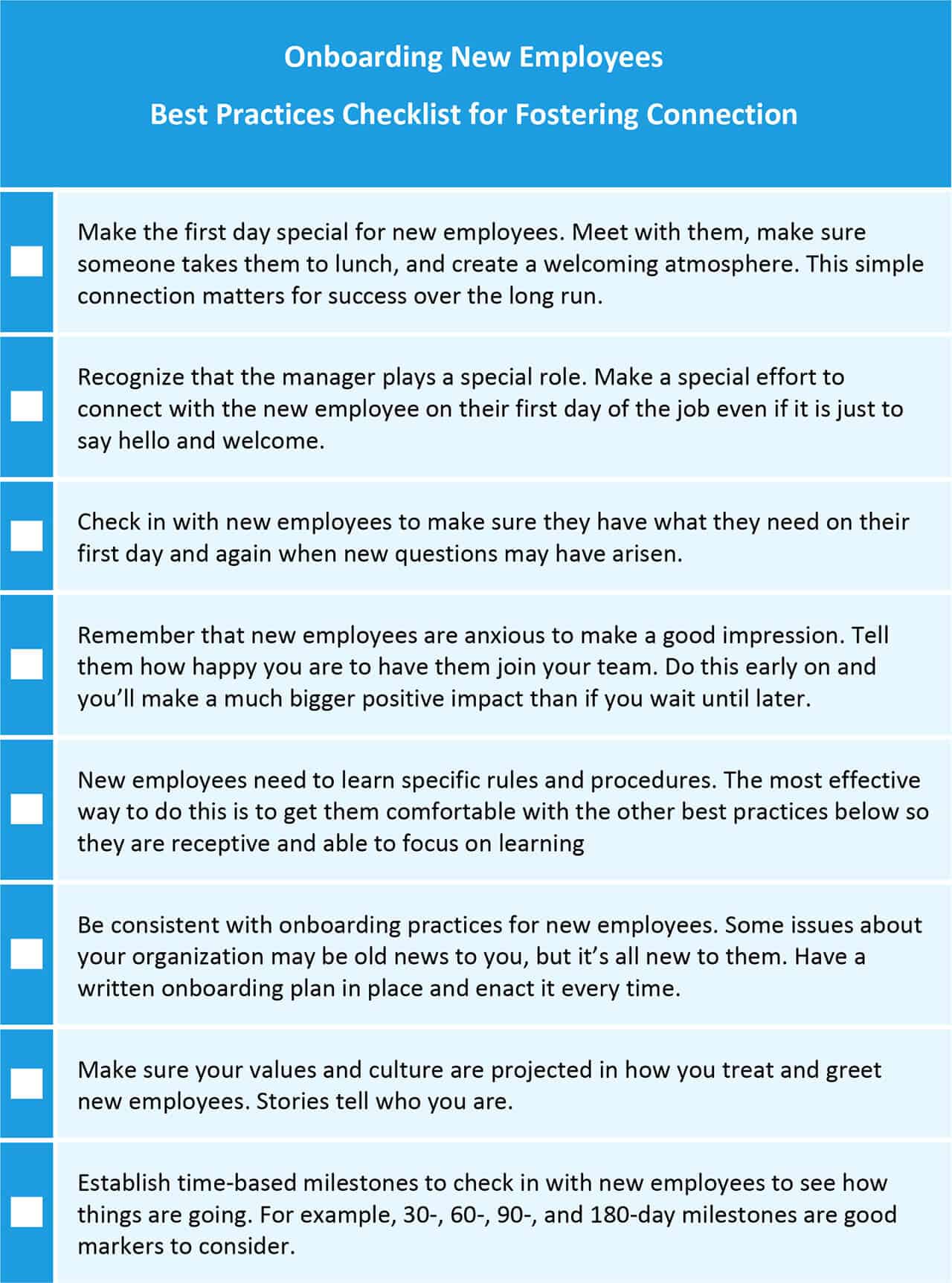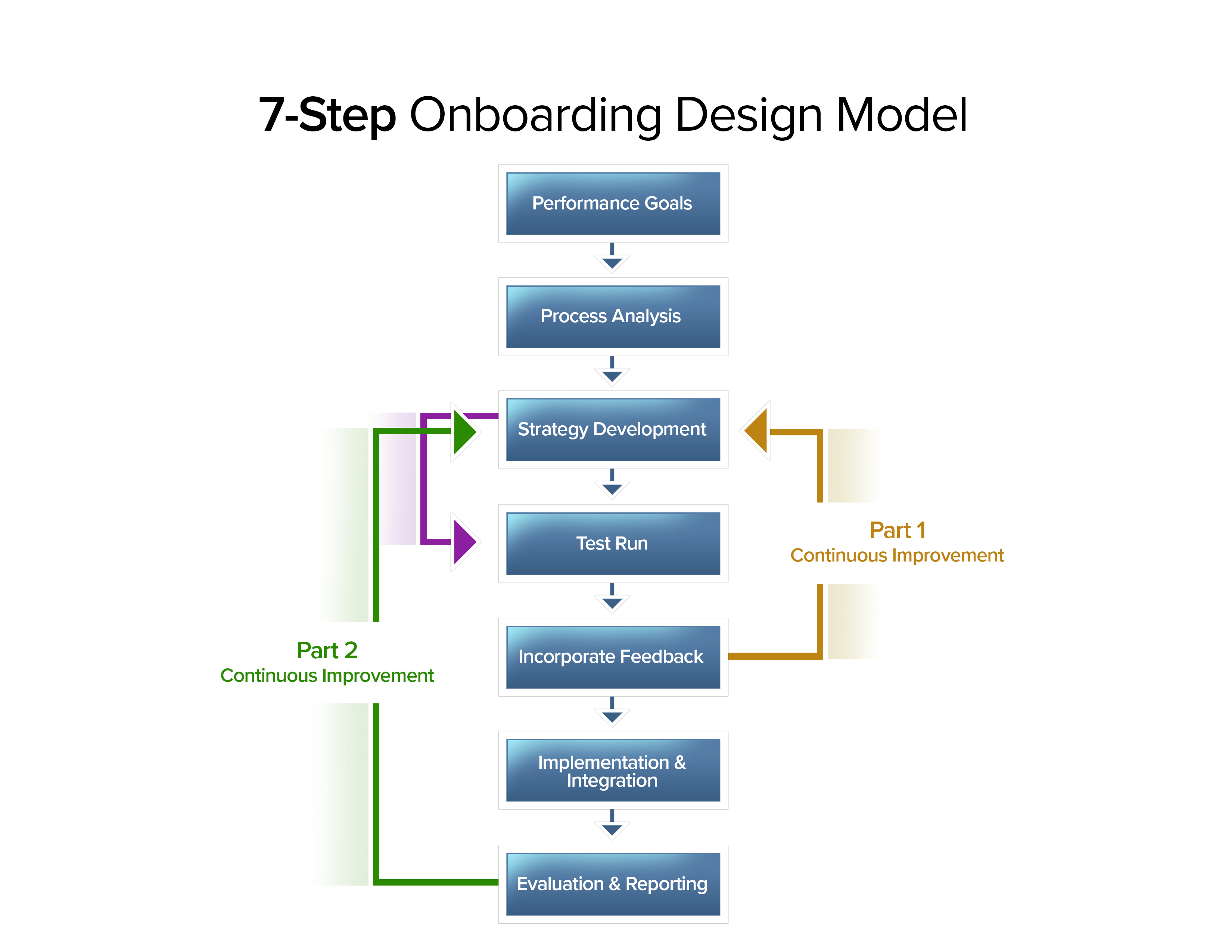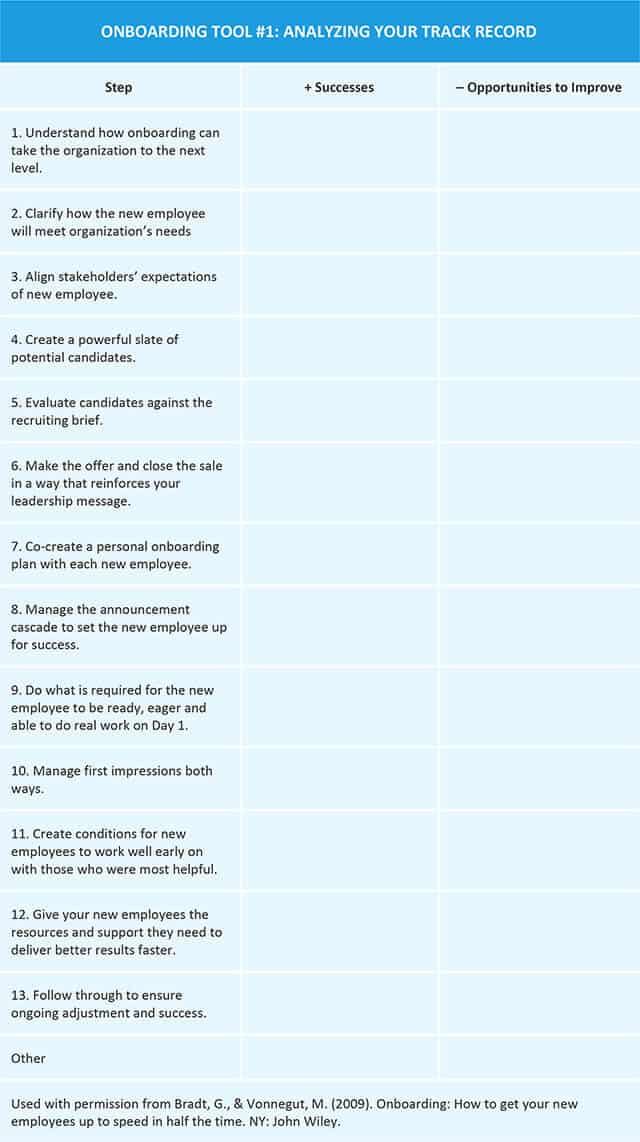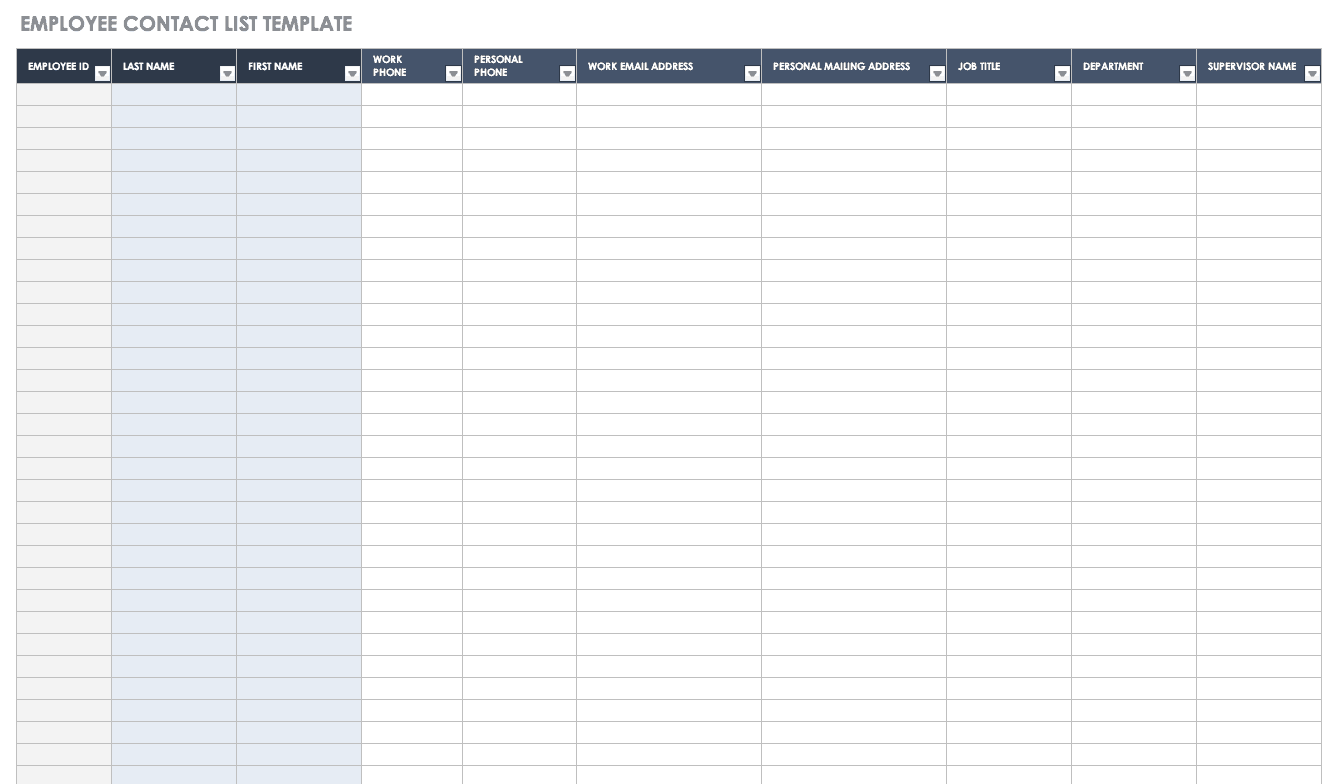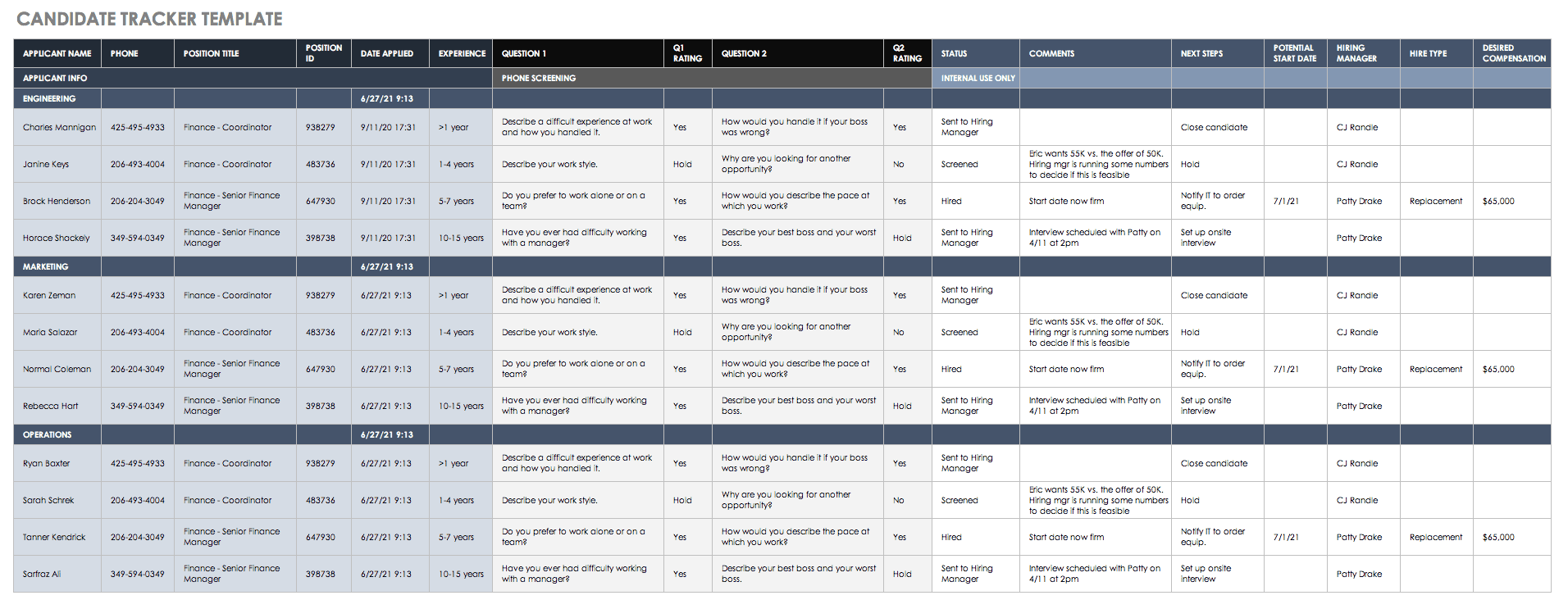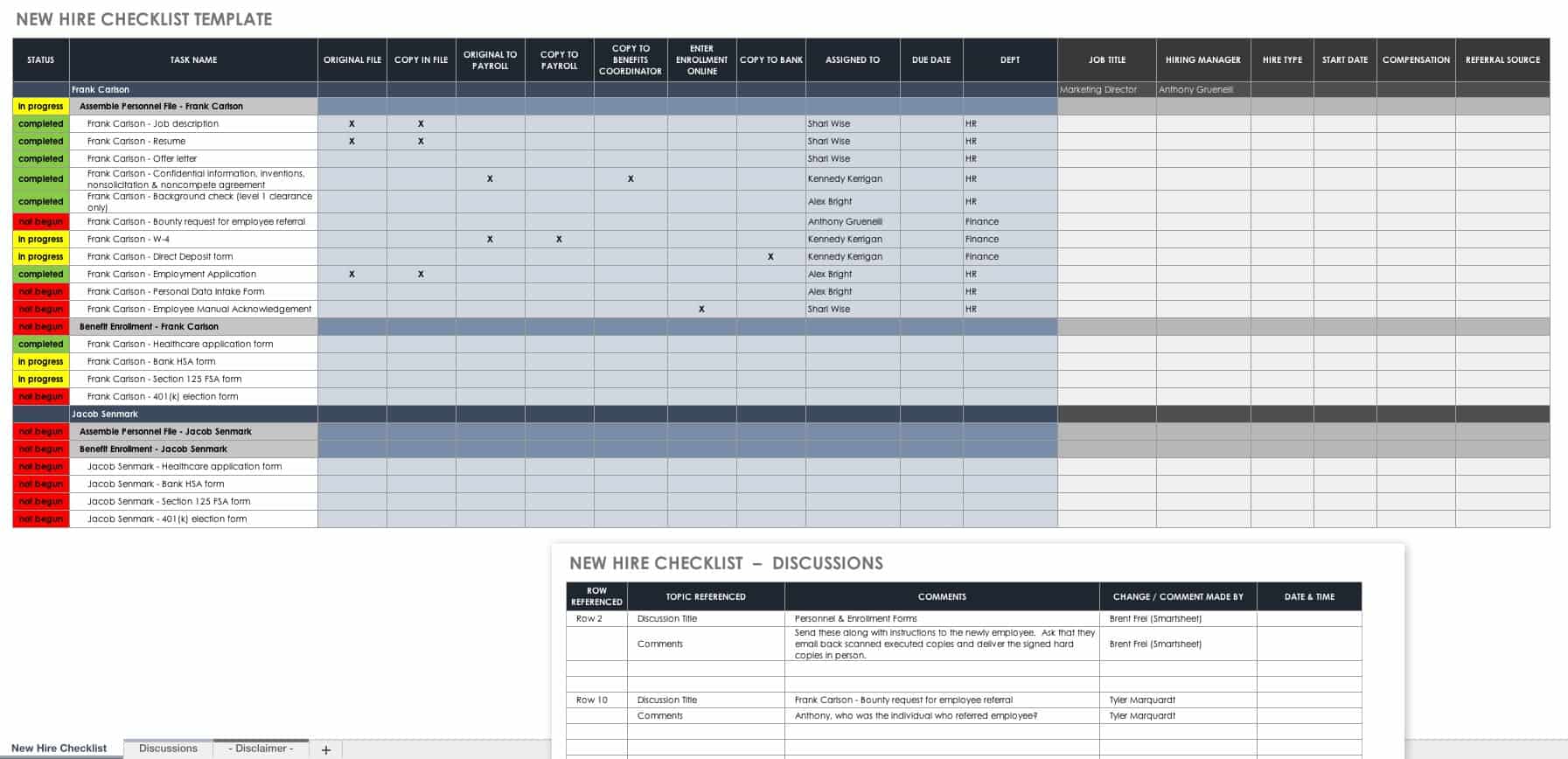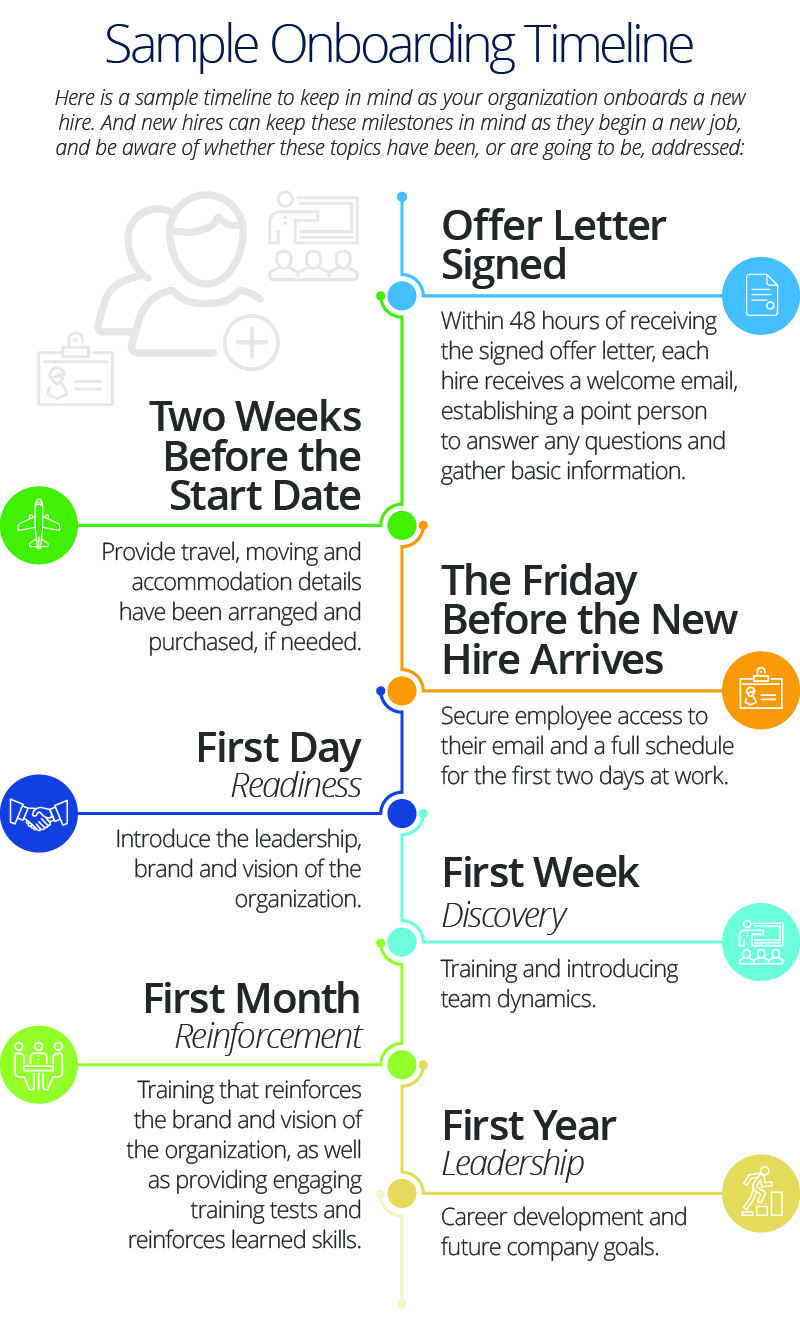What Is New Employee Onboarding?
If you’ve ever started a new job and had to begin working before you even knew where to find a cup of coffee or hunkered down in a conference room at a borrowed computer because your desk wasn’t set up yet, chances are you’re no longer at that company. That organization should probably consider setting up a formal onboarding program, if it hasn’t created one already.
What exactly is onboarding? Simply put, onboarding (sometimes called organizational socialization) is a process that welcomes new employees into a company. Arming new workers with the tools, resources, and knowledge they need helps them become successful and productive, and it creates engaged team members who are dedicated to the company mission and ready to make a long-term contribution. And with research that shows alarming employee turnover statistics, like the fact that 25 percent of millennials plan to leave new positions within 12 months, onboarding is becoming a more prevalent talent management trend.
To dig into the details, we asked several experts and authors to weigh in on the process and explain how to create a successful onboarding strategy:
Employee Onboarding: Definitions, History, and Academic Theory
Employee satisfaction, turnover, and integration into a new company were first studied in earnest starting in the second half of the 20th century. John Van Maanen and Edgar H. Schein identified six major tactical dimensions that characterize and represent the ways in which organizations may differ in their approaches to socialization, and the Van Maanen and Schein model, introduced in 1979, outlined six key ways organizations might differ in their approaches to socialization:
- Collective vs. individual socialization: How is the entire organization socialized vs. how is the individual socialized?
- Formal vs. informal socialization: This addresses how much structure should or should not be applied to the socialization process.
- Sequential vs. random socialization: How important is doing socialization/onboarding in sequential steps that build upon each other vs. random topics and subjects that arise organically?
- Fixed vs. variable socialization: How much socialization should be fixed for every employee, and how much should be variable based on the employee and their role?
- Serial vs. disjunctive socialization: Should socialization occur in serial or disconnected processes?
- Investiture vs. divestiture socialization: How much individual personality and traits of the employee will be accommodated vs. a focus on the traits and needs of the organization?
Later, the Jones model from 1986 built on these dimensions and reduced them to two categories: socialization based on the individual, and socialization based on the organization/institution.
For more information on this history, as well as tactical tips and ideas for onboarding, see this article detailing onboarding processes, best practices, and tips, especially the section on how onboarding became a proper organizational discipline.
Onboarding is used by and useful to organizations and companies, human resources departments, team leaders, and supervisors. It can be especially helpful in industries and departments that see high turnover, such as call centers, customer service groups, retail, restaurants and hospitality, developers, and sales teams.
Onboarding isn’t the same as orientation. For new hires, orientation is a one-time event welcoming them to the company. Onboarding, on the other hand, is a series of events (including orientation) that helps them understand the company culture and how their own work contributes to the overall business and success.
What Are the Benefits of a New Employee Onboarding Process?
When we asked the experts about the benefits of onboarding, they all emphasized the upside of a great process and the negative consequences that can result from a nonexistent or ineffective process.
“The benefits of successful onboarding are plentiful,” says Dr. Bauer. “For example, when done well, onboarding leads to higher job attitudes in the form of job satisfaction and organizational commitment, lower turnover intentions and actual turnover, and better performance. Onboarding without a plan can work, but without a formal process, the process becomes one of sink or swim. Some will hit the water and do well. Others will struggle to be effective.”
Alexia Vernon of Influencer Academy highlights the bottom line: “When new hires understand how their immediate work is laying the foundation for future success, their engagement happens with ease rather than effort. And the cost for failing to onboard employees is substantial. The costs for not investing in the development of an effective onboarding program are far greater than simply losing and replacing new employees. The International Institute for Management Development reports that some of the greatest expenses come from employees who remain at an organization, but do not understand their roles — $37 billion in the United States and United Kingdom combined.”
Katy Caselli is an organizational psychologist who consults with companies on best practices in human resources, including onboarding. In her view, new employees really want to learn and see how they fit in to the big picture of the company, its culture, and its success.
“A new hire is wondering, ‘How can I add value right away?’” Caselli says. “They want to see where they fit in, and that gives them incentive to start strong out of the gate.”
The company, though, needs to set up the new hire for that success. “The more a company invests in onboarding,” Caselli says, “the more success it will see in the employee.” These investments can range from warm welcomes from colleagues and a lunch on the employee’s first day to thorough coursework and guidance to supplying information and resources. If these elements are robust enough, she said, they will help the new hire navigate the normal obstacles and conflicts in an organization’s daily operations.
Dr. Suggs sees onboarding as a “bridge” between the promise in a new hire and the fulfillment of their potential. “Onboarding integrates new employees into their organization, prepares them to succeed at their job, and supports them in becoming fully engaged members of their organization.”
She adds more benefits around maximizing new employees: “Full productivity in core functions, increasing the probability of employees adapting to the organization’s culture, and modeling the values of the organization — this ensures longer tenure, thus positioning employees for enduring success and increasing ROI.”
But she cautions: “I also want to note that employees leaving an organization can be contagious, and potential candidates may become cautious with companies that have a high turnover rate.”
The new employee landscape is constantly evolving, affected by the national and global economy, the health and growth of industries, and the new generations entering the workforce. Caselli says, “During the recession years, 2009-11, surveys found that engagement actually went up. Employees felt happy to have their current jobs, and there were not many other options.”
But since the late 2010s, the job landscape has shown strong growth, and employees feel they have more options if they aren’t happy where they are. “That’s why a strong onboarding plan is so critical — it helps demonstrate that the company cares, and it gives the employee the tools to succeed,” notes Caselli.
Another current trend is the entrance of the millennial generation into the workforce, says Cara Silletto. She is the owner of Crescendo Strategies, an author, and a successful speaker about best practices in reducing employee turnover. “The baby boomers, the Gen Xers, and the Gen Yers were all used to doing homework without Google and coming home to make a snack for themselves, probably without a microwave,” Silletto says.
“But the millennials grew up after the awareness of ‘stranger danger,’ and often were protected more as they grew up. That means that the transition into a workforce could be frustrating for them — they may not know how to make the first move,” Silletto notes. “So that makes onboarding even more critical. New hires, especially these younger ones, need the resources at their fingertips. Give them a cheat sheet of company acronyms, tools and software they need, and a clear and concise employee handbook that’s very explicit.”
Successful onboarding can start during a prospective employee’s job interview, Silletto says. “Ask them what their favorite candy and soda are in the interview. Then on the first day, have the Snickers and Mountain Dew by their computer. It costs $1.50, but it will make them smile and make them feel valued on day one.”
What to Ask Before Building and Deploying an Onboarding Program
If your company doesn’t have onboarding plans (either informal or formal), experts suggest taking the time to ask internal questions before implementing a process. These questions include:
- When will onboarding start?
- How long will it last, and what do the different stages look like?
- What impression do we want new hires to walk away with after onboarding is complete?
- What do new employees need to know about the culture and the office environment, in addition to the nuts and bolts of the work they were hired to do?
- What role will HR play? What about the employee’s supervisor? Will the company assign a “buddy”?
- What materials will we use, and when, during onboarding, including lectures, classroom training, videos, printed materials, computer- and intranet-based orientations, mentorship, recruitment, and other collateral?
- What goals do you want to set for new employees for both the short and long term?
- Most important, how will we measure the success of the program on an ongoing basis, so that we can strengthen and make it more impactful over time?
The High Costs of Not Using Structured Onboarding
Onboarding has become a priority for many organizations because of low initial productivity for new hires and high turnover. Every year, as Dr. Bauer reports, “More than 25 percent of the working population experiences career transitions every year. In Fortune 500 companies alone, about 500,000 managers take on new roles each year, and overall, managers begin new jobs every two to four years. Fifty percent of all senior outside hires fail within 18 months in a new position, and fifty percent of all hourly workers leave new jobs within the first 120 days.”
It’s also pricey to find new employees: Replacing a salaried employee equals the cost of six to nine months’ salary on average. In the case of top-level executives, the cost can be as high as 400 percent of the executive’s salary. For more facts about onboarding, see the infographic above.
How do you stop this kind of expensive leave-taking? Best practices for onboarding can help overcome these challenging statistics and keep workers happy and committed to their employers. In fact, research has found that 58 percent of employees are likely to stay with their company after three years if they’ve been part of a structured onboarding process.
What Are Onboarding Best Practices?
Glassdoor CEO and co-founder Robert Hohman on CBS This Morning discusses which companies made the list and what sets them apart. He emphasizes three points that are important to employees:
- Understanding the company mission and culture
- Feeling like everyone on the team is working to accomplish that mission
- Being recognized as individuals
These concepts are fundamental to making a company an attractive and desirable place to work and stay on the team. They also dovetail with the main goals of any employee onboarding plan:
- Role clarity
- Self-sufficiency
- Social acceptance
- Knowledge of organizational cultural and work environment
- Better understanding of job duties, policies, and team dynamics
- Development of skills that can be put to use right away
At a high level, best practices include these tips:
- Implement all the onboarding basics before the employee’s first day
- Make their first day on the job special
- Design and implement a formal orientation program
- Create and use written onboarding plans
- Ensure these programs are participatory and interactive
- Keep “onboarding” your new employees over the course of weeks, months, even years
- Monitor the employee’s progress over time, especially at important milestones like 30, 60, or 90 days
- Engage your company’s key stakeholders
- Use technology to empower both your new hires and those onboarding them
Some important concepts can help you steer your onboarding processes. Here are 15 guidelines to keep in mind, along with the tactics that can bring them to fruition:
- Familiarity breeds contentment. Help new hires get to know the corporate family tree.
- Don’t complicate matters. Make it simple and interesting.
- For new employees, post orientation schedules, materials, benefits forms, and an extensive FAQ about the company on your intranet, and make sure it’s accessible to new hires from a link in a welcome email before their first day on the job.
- Give new employees an easy way to keep track of exactly which worker programs they’re eligible for and how they can take advantage of these benefits.
- Welcome the whole person, rather than a set of job functions. This helps new hires more quickly assimilate into your corporate culture.
- Make it personal. Don’t reduce day one to paperwork and bureaucratic obligations. Instead, prioritize interpersonal relationships with key colleagues.
- Get the key documentation on file in advance or as quickly as you can on the first day.
- Remember that in-person onboarding techniques are more effective than virtual exercises.
- Plan ahead. The most successful onboarding programs start during the recruitment and hiring process.
- Before implementing a formal onboarding program, answer some key questions (above) to attain team and upper management buy-in.
- Be thoughtful. Carefully craft every interaction with respect for whomever is on the other end.
- Have the new hire send out an introduction email.
- After the first day, schedule departmental deep dives so that new hires get broad and meaningful exposure to the motivations and responsibilities of each team.
- Schedule informal sessions to educate new hires: Coffee breaks, walking meetings, lunches, etc.
- Schedule time with the CEO to conclude onboarding.
The Four C’s of Onboarding and Communicating Culture
When asked about best practices, Dr. Bauer referred to the four onboarding building blocks that she included in Onboarding New Employees: Maximizing Success to help employees establish meaningful connections to the organization.
- Compliance is the lowest level and includes teaching employees basic legal and policy-related rules and regulations.
- Clarification refers to ensuring that employees understand their new jobs and all related expectations.
- Culture is a broad category that includes providing employees with a sense of organizational norms — both formal and informal.
- Connection refers to the vital interpersonal relationships and information networks that new employees must establish.
Here’s a checklist from Dr. Bauer to reinforce the last of the four C’s:
These practices were developed by Talya Bauer, Professor of Management at Portland State University, based on observations and feedback from new employees and managers at small, medium, and large organizations around the world, as well as research on new employee adjustment.
Source: Dr. Bauer’s Best Practices Checklist on Google Rework
Dr. Suggs shares the same thinking about the importance of culture in onboarding: “Organizational socialization has a pervasive impact on new employee adjustment. Socialization is a process for acclimating individuals to the components of an organization’s culture that are necessary for success. If new employees do not acclimate socially, even if they are experienced professionals, the probability of their reaching full productivity within their organization is severely compromised. Additionally, employees who are not socialized are more likely to quit.” She also pointed out that it’s important to impart the mission, vision, and values, and share what successful employees know about the organization or the rules of the game.
The Rules of the Onboarding Game: Anticipating Employee Questions
The rules of the game dictate how business gets done. Whether the employee has decades of experience or is new to the workforce, explaining corporate and team etiquette, processes, and goals from the outset will help ensure success — on both sides.
Nothing is too small to mention. Here are some possible questions to keep in mind:
- When are lunch breaks?
- What is the preferred method for instant messaging?
- Where’s the restroom?
- What should he or she bring? (Telling them to bring two forms of ID to verify paperwork is a good idea.)
- Where should he or she park?
- Who should he or she ask for in the lobby?
- Where is the copy machine? (And how does it work?)
- Where is the cafeteria?
- Who should the employee talk to if he or she has additional questions? (It's a good idea to assign a co-worker or a hiring manager as a mentor to check in with the new hire, at least through the first week.)
The minor details can trip you up when you’re trying to do your best as a new team member. Providing a newbie with the information needed so that they don’t have to guess (or misunderstand) how the office works and what people expect can make a huge difference in the first days on the job.
Comprehensive, Continuous Improvement Models for Onboarding
Though onboarding should be tailored to the organization and the type of employees you want to attract, our experts noted a number of best practices that they use in their own practice.
Keeping the lines of communication open are paramount in Vernon’s model. “During the onboarding process, be sure that new employees receive coaching on their performance: the good, the bad, and the confusing. It takes approximately 90 days to create a new habit, and it's vital for employees to solidify the right behaviors.”
She adds that it’s necessary to “link onboarding to an employee's future success. It's never too early to show an employee how short-term success lays the foundation for long-term growth opportunities.”
You also need to include all stakeholders. “Make sure that onboarding is an ongoing activity with all people who have a role in an employee's success integrated into the plan,” says Vernon.
Dr. Suggs emphasizes a comprehensive approach: “I highly recommend that anyone who is thinking about developing an onboarding program should consider utilizing a comprehensive onboarding model.”
She expands on the concept: “The seven-step design phases for developing an onboarding program are a continuous improvement process intended to support the evolution of your program with the ever changing needs of your organization and the changing market needs. Those changes include cash flow, market competition, technology, consumer demands, shareholder demands, availability of resources, time constraints, leadership expectations, change in leadership, mergers, acquisitions, restructuring, just to name a few. As these changes shape the landscape of how your organization conducts business, so should they influence your onboarding process, too.”
The Seven-Step Onboarding Design Model
Dr. Bauer also stresses the importance of continuous improvement. She suggests keeping an onboarding track record and making adjustments as needed. She recommends a checklist that provides a framework for identifying strengths and where there’s work to be done, looking into your current situation, and setting a direction for the future.
Onboarding Tool: Analyzing Your Track Record
Potential Drawbacks and Challenges to Onboarding
While most companies and experts embrace the idea of onboarding, there can be downsides and challenges. It’s important to keep these ideas in mind as you create, deploy, and adapt your own onboarding processes.
- The outcomes of organizational socialization have been positively associated with reducing uncertainty, but not for all organizations. Some studies (Jones,1986; Allen and Meyer, 1990) found that socialization tactics can negatively impact role clarity.
- A possible explanation for this adverse effect: Formal socialization tactics protect the newcomer from their full responsibilities while they’re learning the ropes, and that may introduce role confusion when the new hire fully joins the organization.
- Depending on the organization’s culture, new hires may benefit from increased ambiguity, despite the potentially negative connection.
- Socialization researchers have brought up major concerns over the length of time a newcomer needs to adjust.
- Researchers have found that some special orientation sessions designed to educate newcomers about the organization — with the goal of strengthening their organizational commitment — can be unpleasant, overwhelming, or traumatic to new hires.
- When new hire training is executed poorly and there’s a major disconnect between the organization and the employee, it becomes more likely that employees will leave, while you wonder what went awry. In other words, onboarding done incorrectly can produce bigger problems than not doing it at all.
How to Use Onboarding Technology, Templates, and Checklists
“Technology can be an important part of the onboarding process across the four C's,” says Dr. Bauer. “It can help with compliance aspects such as required paperwork and a basic understanding of legal issues at work. It can serve as a resource to help new employees understand their roles. It can help connect new employees with one another and other important organizational insiders. And it can help illustrate and reinforce the organization's culture.”
A blended approach is the current trend in onboarding programs. Some of the program’s information delivery is better suited to classroom training, some via e-learning, and others through meetings with key personnel or with written material. All of it can be accessed through the company intranet. If done correctly, these programs eliminate human error and coordinate everyone involved in welcoming new employees:
- Employee/Onboarding Web Portal: Onboarding begins before the employee starts work, with an accurate job description and a clearly stated objective and strategy, as well as expectations. Onboarding portals should hold your brand’s personality, mission, and vision. A great way to introduce candidates and employees is through introductory videos and the ability to share, view, and complete important paperwork for both onsite and offsite workers. Employee portals also provide the opportunity for digital training and ongoing feedback forms. You can find a complete onboarding checklist here.
- Employee Onboarding Software: Consider how technology has changed the way the world runs and how business gets done.The same should go for onboarding. Take advantage of cloud-based, online workspaces that keep everyone in alignment with processes, timeline, transparency, and easy communication.
- Employee Onboarding Templates and Checklists: Templates can make the process much easier for both the new candidate and HR staffers. Here are some that are free to use:
Download Employee Contact List Template
Download Candidate Tracker
Download New Hire Checklist
More Onboarding Templates, Checklists, and Tools
If you’re looking for an orientation checklist to help organize all the elements, Dr. Suggs has an extensive new hire orientation checklist.
Dr. Gia’s Not Your Mom’s New Hire Orientation Checklist
Reference:
- Buckner-Hayden, Gia, “The Impact of an Onboarding Program on Employee Outcomes at the Community Mental Health Council (CMHC): Did the Organization Benefit from an Enhanced Workforce?” (2012). Ed.D. Dissertations. Paper 43.
- Finn, P. (2006). The importance of being onboarded. Evanston, IL: Northwestern University School of Education and Social Policy.
- Messmer, M. (1999). Human Resources Kit for Dummies. New York: Wiley Publishing, Inc.
- Suggs, G. (2014). Maximize the Success of New Employees: Onboarding, A Flight plan for Taking Your Workforce to New Heights. St. Charles, IL: BFP Books.
- Truesdell, W. (1998). New employee orientation: Starting off on the right foot. The Management Advantage, Inc.
Click here for more templates and checklists to help you set up a tailored onboarding process, including feedback, training, transition plans, and other tools.
How Long Are Onboarding Planning Timelines?
The length of time that you take to onboard new employees can vary. If you’re a small, relatively flat organization with easy access to information, managers, and mentors, the time frame can be short. If you’re a multilayered Fortune 500 company, the process can last up to two years. Our experts have different approaches to timelines.
Alexia Vernon says, “Onboarding should begin the day an employee is hired and last for an employee's first 90 days… Onboarding is about developing the behaviors that will be the foundation of an employee's long-term success. In an effective onboarding program, the HR and learning and development functions collaborate to design formal programming. Yet because behavioral development takes time, it's as important, if not more so, that new hires' managers also are involved in the process — hence the long time frame.”
Dr. Bauer finds that the time frame may need to last a bit longer. “In my research, I approach onboarding as being one year,” she said. “When I started work in this area, organizations usually considered only the first day, week, or month as part of onboarding, as it was associated with orientation programs. But more recently, I am hearing organizations are considering employees ‘new’ for longer periods of time. For example, NASA recently designed a two-year onboarding process.” Dr. Bauer shares her 12-month model below.
Source: Onboarding New Employees: Maximizing Success
You can also take a more tactical approach to the onboarding timeline:
Is There a Difference Between Onboarding Hourly Employees and Managers?
Every worker is important, but because the cost of losing a high-level manager can be 400 percent of their annual salary, special measures need to be taken with executives and managers. Dr. Suggs says, “It can be stressful as new employees aim to adjust to the culture, social norms, and philosophy of a new job setting. These challenges are relevant on the individual-contributor-level frontline staff. However, managerial and executive-level staff have the education, experience, and expertise to escape these challenges, right? Wrong!
Unfortunately, this vulnerability is relevant at all professional levels, including supervisory, managerial, and executive.”
She says, “Turnover at the top has significant implications across the organization. When there is turnover at the executive level, the organization experiences double jeopardy. It must endure the loss of a senior-level staff person. In addition, turnover at the executive level almost always causes some disruptions with that executive’s direct reports and laterally.”
Because of their high visibility and impact on the bottom line, management (particularly executive) hires need to get up to speed more quickly, and their onboarding will need to be more elaborate than for hourly workers. Here are some best practices for onboarding managers and executives:
- Be Clear About Expectations: Write and share a formal onboarding plan. Check in regularly for feedback, identify and quickly resolve problems, and have clear ongoing evaluations against key metrics that have been identified from the outset. Clarity about performance expectations go a long way toward minimizing failure.
- Build Relationships: Incorporate cross-functional support and solicit input from key stakeholders. Make sure that the new leader is engaged with his or her team — this is an important step in the onboarding process. You want to develop positive relationships between the new manager and his or her team members and peers as quickly as possible.
- Think Long-Term: Onboarding efforts are continuous and must be flexible. As company and market dynamics evolve, your manager onboarding program should, too.
What About Women and Employees of Color and Onboarding?
Branded a “moxie maven” by the White House Office of Public Engagement for her approach to developing female leaders, Alexia Vernon emphasizes that onboarding is part of cultivating a path to leadership for women. “When women feel that there is a pathway for them to move into leadership roles, and they have an opportunity to develop and refine their leadership skills before they are asked to lead, they are more likely to position themselves to lead — and when leading be perceived as more confident and competent.”
Vernon continues, “In a good onboarding program, participants see how they can move up within an organization and are consciously developing the mindset, behaviors, skills, and relationships to be successful. So any company serious about creating a successful female leadership pipeline should pay particular attention to how it's setting up employees (particularly women) for success from the get-go.” The same applies for employees of color: Giving them the visibility into the paths toward success is business-critical and starts the first day of onboarding.
A Helpful Checklist of How to Prepare for an Employee’s First Day
It’s the big things — and the little details — that can make an employee feel at home and ready to ramp up on their first day. Here’s a helpful checklist of how to prepare for an employee’s first day:
- Set up the computer. Make sure their computer is wiped of the previous owner’s materials and loaded with the software they’ll need.
- Set times for them to meet with other staff members and teams they’ll be working with.
- Send an email to everyone in the office so that they're prepared to welcome the new employee.
- Get the new worker a security badge if needed.
- Configure the new employee's email accounts.
- Have a box of business cards waiting.
- Set up his or her phone system if there is a land line, and provide instructions for using voicemail.
- Organize a lunch on the first day with the new employee and their team.
- Introduce them to important tools used.
- Orient them to the office.
- Introduce them to the team.
- Evaluate your hire’s onboarding experience afterward.
- Create a document for day one that includes detailed documentation of the culture of the company.
Links to Useful Onboarding Resources
Dr. Bauer is an author and contributes research and writing both individually and with colleagues. You can find links and information about Dr. Bauers' work here. Below, we’ve also included information for professional organizations, books, and publications to enrich your onboarding practice.
Human Resource Associations
Most of the following associations are nonprofits that provide information, professional development, resources, and research:
- Association of Executive Search Consultants
- Academy of Human Resource Development
- American Arbitration Association
- The Association for Talent Development (ATD)
- Center for Human Resource Management Studies
- College and University Professional Association of Human Resources
- HR People + Strategy (HRPS)
- Human Capital Institute (HCI)
- Human Resources Research Organization
- International Association for Human Resource Information Management
- International Public Management Association for Human Resources (IPMA-HR)
- International Personnel Assessment Council (IPAC)
- International Society for Performance Improvement
- MRA - The Management Association
- National Association of African Americans in Human Resources
- National Association of College and University Business Officers
- National Human Resource Association
- Professionals in Human Resources
- Recruitment Process Outsourcing Association
- Society for Human Resource Management
- Society for Industrial and Organizational Psychology Inc.
- WorldatWork
Books
Here’s a list of current books about onboarding best practices:
- Successful Onboarding: Strategies to Unlock Hidden Value Within Your Organization by Mark Stein and Lilith Christiansen
- The First 90 Days: Proven Strategies for Getting Up to Speed Faster and Smarter, Updated and Expanded by Michael D. Watkins
- Creative Onboarding Programs: Tools for Energizing Your Orientation Program by Doris Sims
- 10 First Days: A first hand account of 10 very different onboarding experiences by Paul J. Nunn Sr.
- Onboarding A Flightplan for Taking Your Workforce to New Heights by Gia Suggs
- Talent Selection and Onboarding Tool Kit: How to Find, Hire, and Develop the Best of the Best by Erika Lamont and Anne Bruce
Publications
Get the most up-to-date information on HR practices, including onboarding and new research, from these online publications:
- Academy of Management Journal
- Electronic Journal of Radical Organisation Theory
- Employee Benefits Journal
- European Management Journal
- Harvard Business Review
- Human Resources Today
- International Journal of Human Resource Management
- International Journal of Training & Development
- International Labour Review (ILO)
- Journal of Compensation and Benefits
- Journal of International Development
- Journal of Organizational Behavior
- Management Learning
- Nonprofit & Voluntary Sector Quarterly
- Organizational Dynamics
- Personnel Today
- Public Administration Review
- Public Personnel Management (IPMA)
- Training Journal
- Women in Management Review
Improve Employee Onboarding with Smartsheet for Human Resources
Empower your people to go above and beyond with a flexible platform designed to match the needs of your team — and adapt as those needs change.
The Smartsheet platform makes it easy to plan, capture, manage, and report on work from anywhere, helping your team be more effective and get more done. Report on key metrics and get real-time visibility into work as it happens with roll-up reports, dashboards, and automated workflows built to keep your team connected and informed.
When teams have clarity into the work getting done, there’s no telling how much more they can accomplish in the same amount of time. Try Smartsheet for free, today.





